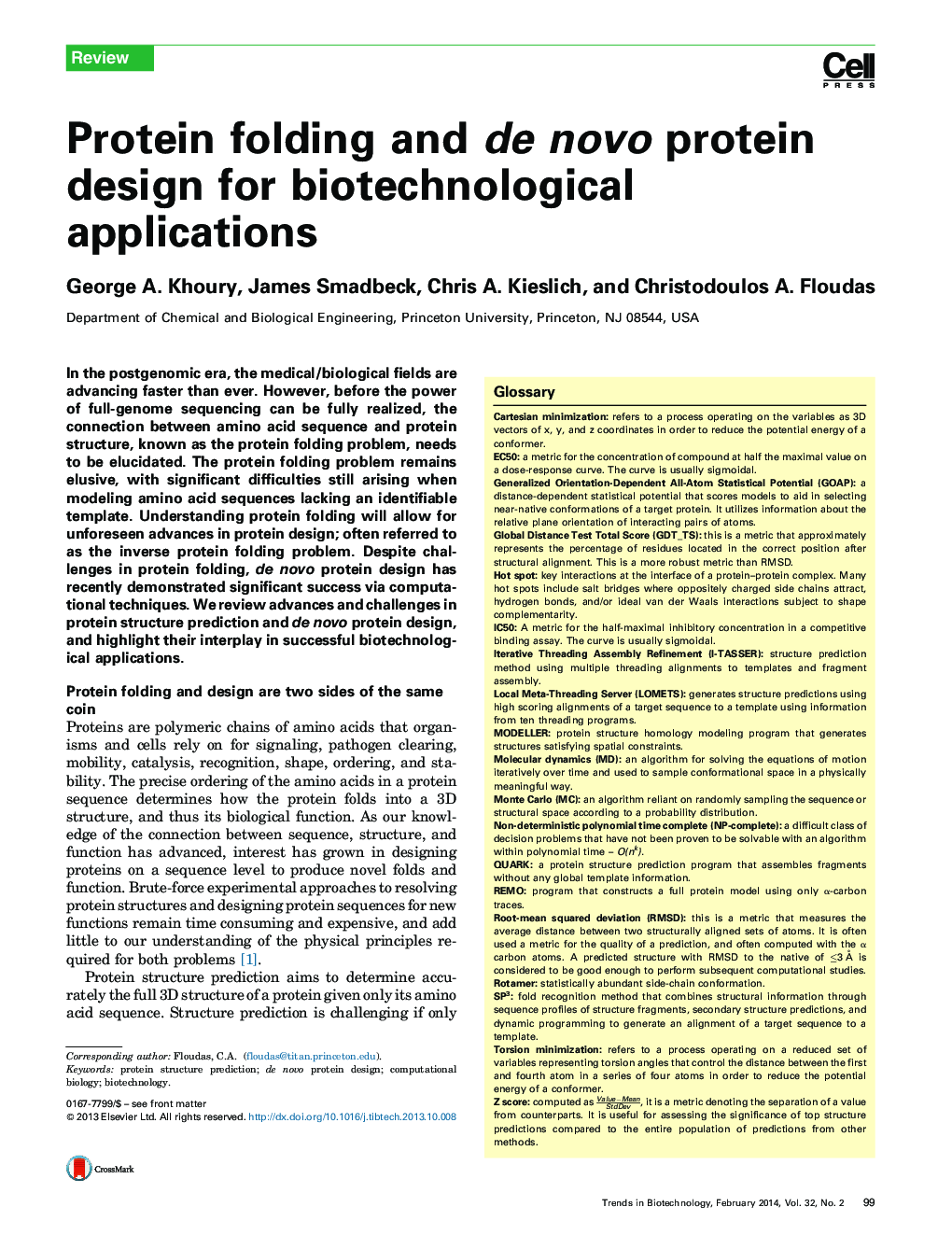| Article ID | Journal | Published Year | Pages | File Type |
|---|---|---|---|---|
| 36855 | Trends in Biotechnology | 2014 | 11 Pages |
•Interplay between accurate protein structure prediction and successful de novo protein design.•Reviews current state-of-the-art structural protein prediction methods and challenges.•Reviews features of successful de novo protein designs.•Biotechnology applications in therapeutics, biocatalysts, and nanomaterials are summarized.
In the postgenomic era, the medical/biological fields are advancing faster than ever. However, before the power of full-genome sequencing can be fully realized, the connection between amino acid sequence and protein structure, known as the protein folding problem, needs to be elucidated. The protein folding problem remains elusive, with significant difficulties still arising when modeling amino acid sequences lacking an identifiable template. Understanding protein folding will allow for unforeseen advances in protein design; often referred to as the inverse protein folding problem. Despite challenges in protein folding, de novo protein design has recently demonstrated significant success via computational techniques. We review advances and challenges in protein structure prediction and de novo protein design, and highlight their interplay in successful biotechnological applications.
